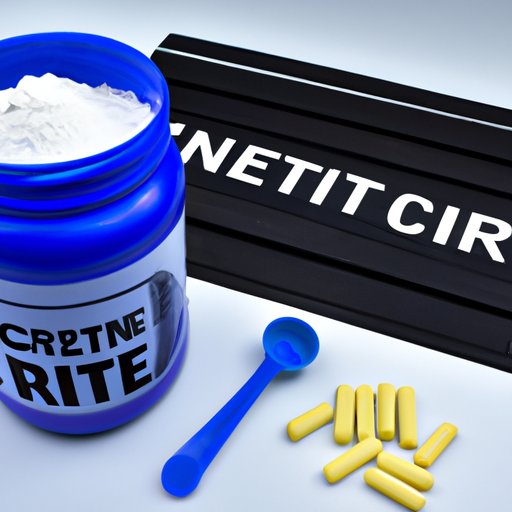Introduction
Creatine is a natural substance found in the human body and is also available as a dietary supplement. It is most commonly used by athletes and bodybuilders to improve muscle strength, power, and performance. Creatine is believed to work by increasing the availability of energy in cells, which can help increase muscle mass and strength. There are several types of creatine supplements available, including monohydrate, ethyl ester, hydrochloride, and others.
Pros and Cons of Using Creatine
When considering whether or not to use creatine, it’s important to weigh the potential advantages and disadvantages. Studies have shown that creatine can be beneficial for improving strength and power, as well as increasing lean muscle mass. It has also been suggested that creatine may help reduce fatigue during exercise and improve overall recovery time after workouts.
However, there are some potential side effects associated with taking creatine, such as weight gain, bloating, dehydration, and gastrointestinal distress. Additionally, long-term use of creatine has not been studied extensively and could potentially lead to kidney damage or other health issues. It is important to consult with your doctor before beginning any new supplement regimen.
Step-by-Step Guide to Starting Creatine
Whether you’re a beginner or a seasoned athlete looking to add creatine to your supplement routine, there are certain steps you should take to ensure you’re getting the most out of your experience. Here’s a step-by-step guide to help you get started:
1. Selecting the right type of creatine
There are a variety of different types of creatine supplements available, so it’s important to do your research and select the one that’s best for you. Monohydrate is the most common form of creatine and is generally considered the safest option. However, depending on your goals and preferences, there may be other forms that better suit your needs.
2. Determining the correct dosage
Once you’ve selected a type of creatine, it’s time to determine the correct dosage. Generally speaking, a loading phase of 20-25 grams per day for 5-7 days is recommended to maximize creatine levels in the body. After the loading phase, a maintenance dose of 3-5 grams per day is usually sufficient.
3. Understanding the timing of taking creatine
In addition to selecting the right type and dosage, it’s also important to understand when to take creatine. Most experts recommend taking it immediately after a workout, as this is when the body is most receptive to absorbing the supplement. Additionally, some studies suggest that taking creatine with carbohydrates can help increase absorption.
4. Monitoring your progress and adjusting as needed
Once you’ve established a routine for taking creatine, it’s important to monitor your progress and adjust as needed. Pay close attention to how your body responds to the supplement and make adjustments to the type, dosage, and timing if necessary. Additionally, it’s important to keep track of any changes in your diet or activity level, as these can affect your results.

Tips for Maximizing Creatine Intake
In addition to following the steps above, there are a few tips you can follow to help maximize your creatine intake. First, it’s important to ensure you’re adequately hydrated throughout the day, as dehydration can reduce the effectiveness of creatine. Additionally, eating a balanced diet rich in protein, carbohydrates, and healthy fats can help support your gains. Finally, taking breaks from supplementation can help prevent your body from becoming too reliant on the supplement.
It is also important to note that combining creatine with other supplements can be beneficial, as certain combinations can help increase absorption and amplify the effects of the supplement. However, it is important to speak with a healthcare professional before combining any supplements to ensure safety and efficacy.
Conclusion
In conclusion, creatine can be a great supplement for those looking to increase muscle strength and power. However, it is important to understand the pros and cons of taking this supplement, as well as the steps to properly incorporate it into your routine. By selecting the right type of creatine, determining the correct dosage, understanding the timing of taking it, monitoring your progress, and following the tips outlined above, you can maximize the benefits of using this supplement.
Remember, it is always important to be informed and safe when starting a new supplement regimen. Consult with your healthcare provider before beginning any new supplement, and follow the instructions on the label to ensure safety and efficacy.
(Note: Is this article not meeting your expectations? Do you have knowledge or insights to share? Unlock new opportunities and expand your reach by joining our authors team. Click Registration to join us and share your expertise with our readers.)
